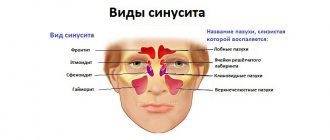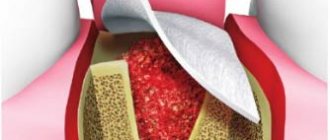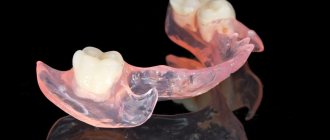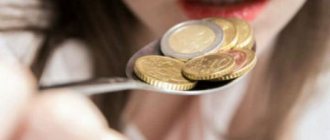Acute sinusitis is an inflammatory process that occurs in the mucous membrane of the nasal appendages (sinuses), so sometimes the diagnosis of sinusitis is also related to inflammation. This disease is characterized by swelling of the cheeks and purulent discharge, accompanied by an unpleasant odor.
In terms of its symptoms at the onset of the disease, the acute form of sinusitis is very similar to a common runny nose, only the treatment of the disease can be more difficult and lengthy. And the condition itself causes enormous discomfort to the patient and interferes with a full life.
Anatomy of the sinuses
There are 4 types of sinuses in the human skull:
- frontal (in the forehead area);
- maxillary, also known as maxillary (in the area of the cheeks under the eyes);
- ethmoid sinuses, or cells of the ethmoid labyrinth (in the area between the nose and eye);
- wedge-shaped (in the very middle of the skull, behind the eyeballs).
The sinuses are peculiar voids that reduce the weight of the skull, participate in the formation and sonority of the voice, in the process of smell, and also serve as shock absorbers for injuries to the facial skeleton.
They also perform a protective function: when foreign particles and bacteria enter the nasal cavity, the nasal mucosa is irritated, sneezing begins, and the particles are evacuated from the body along with mucus. But if the body’s defenses are weakened, bacteria can enter the sinuses from the nasal passages and cause severe inflammation, which is what we observe during the development of acute manifestations of the disease.
General information about sinus lift surgery
A sinus lift is a surgical procedure that uses the human maxillary sinuses (maxillary sinuses) to fill the bone deficiency in the area of the anterior chewing teeth. The essence of the operation is to separate the mucous membrane from the jaw bone and fill the resulting space with osteoplastic material.
Surgery requires preliminary anesthesia, which can be either local (with or without sedation) or general. Access to the maxillary sinus depends on the type of sinus lift:
- Open method. An incision is made on the front surface of the upper jaw. The technique is performed in cases of severe bone volume deficiency and is considered quite traumatic. The graft healing process lasts on average 3-6 months, after which dental implantation can be performed.
- Closed method. This sinus lift is often performed together with implantation, since the incision is made at the site of the future installation of the artificial root. This operation involves less trauma, but is used only for small deficits, up to 4-6 mm.
The duration of the operation depends on its type, but on average it lasts 1-2 hours. During the rehabilitation period, the patient must strictly follow the doctor’s recommendations in order to prevent serious complications from occurring. These include, first of all, proper oral hygiene, as well as taking the necessary medications.
Why do the maxillary sinuses become inflamed more often?
Among inflammations of the paranasal sinuses, acute sinusitis - inflammation of the maxillary sinuses - is most often diagnosed. And there are several reasons for this:
- the maxillary sinuses are the largest in volume;
- The maxillary sinuses are connected to the nasal cavity using anastomoses - small openings covered with mucous membrane (these openings are quite narrow, and even a slight swelling of the mucous membrane with minor inflammation can make it difficult for mucus to come out of them, and the formed and accumulated mucus in the absence of proper outflow becomes a powerful catalyst, if the inflammatory process develops first in neighboring ones.).
Prevention
As for preventive measures regarding perforation of the maxillary sinus, they consist of following the following rules:
- A thorough and comprehensive examination of the patient before undergoing serious dental procedures, including tooth resection or implantation.
- Correct assessment of the anatomical features of the jaw structure of each patient.
- Strict compliance with all technological requirements for complex dental procedures.
Types of acute sinusitis
There are catarrhal and purulent forms of sinusitis.
Make an appointment right now!
Call us by phone or use the feedback form
Sign up
The name “catarrhal” comes from the medical term “catarrh,” meaning “to flow, drain.” That is, with this form of sinusitis, inflammation of the mucous membrane and its swelling develop quite quickly. Initially, the changes affect only the mucous membrane. Inflammation during sinusitis of this form is accompanied by severe swelling of the mucous membrane - it noticeably increases in size and, as a result, a little later transparent mucus forms. Only thanks to timely treatment, it is possible to prevent the transition of catarrhal forms into purulent sinusitis, which with a high degree of probability can become chronic.
With purulent sinusitis, direct contact of pus with the mucous membrane degenerates it, quite quickly and, what is most dangerous, irrevocably. Thus, with improper treatment or no treatment at all, you can very easily and simply join the army of people suffering from a chronic form of sinusitis.
The cause of the purulent form of sinusitis (acute sinusitis) is bacteria. The secreted mucus contains streptococci, staphylococci, and less commonly pneumococci and fungi, which leads to the appearance of purulent contents in the sinus itself.
Reasons for the development of sinusitis
Acute sinusitis can be caused by the following factors:
- colds;
- viral infections: ARVI, measles, influenza, etc.;
- allergic reactions;
- damage and injury to the nose;
- untreated teeth, tooth roots entering the cavity of the maxillary sinus, inflammation of the gums.
In medicine, it is customary to distinguish two ways of infection entering the maxillary sinuses: when the infection penetrates from the nasal mucosa into the maxillary sinus or when the infection develops directly in the maxillary sinus through blood flow and general inflammation.
Sinusitis (in addition to bacteria) can be provoked by factors that interfere with normal air circulation and the release of mucous masses from the sinuses. These include:
- deviated nasal septum;
- adenoids;
- cyst;
- polypous formations;
- and etc.
Unfavorable environmental conditions - dust, gas pollution, work in hazardous industries - can also disrupt the process of the release of mucous masses from the sinuses and further treatment.
Symptoms
Symptoms of acute sinusitis include:
- pain in the cheek area under the eyes;
- pain in the orbital region;
- pressure on teeth and toothache;
- headache;
- pain when tilting the head forward (the pain “radiates” to the back of the head and forehead; the nature of the sensation resembles the pain of a migraine; as a rule, the pain intensifies in the evening);
- difficulty breathing through the nose;
- a feeling of continuous nasal congestion (it may be accompanied by itching, sneezing, dryness);
- the nature of the mucous discharge helps determine the severity of the disease (transparent discharge in a mild form of the disease and thick green discharge in a purulent form);
- bad odor from the nose and mouth (the nose and pharynx are connected to each other; with sinusitis, pus accumulates in the sinuses and causes bad breath; it is difficult to get rid of it, even after brushing your teeth);
- eyes become watery;
- nasality appears in the voice;
- impaired sense of smell;
- high body temperature from 37.5 to 39°C - the body’s response to the presence of infection;
- increased fatigue, decreased appetite, sleep problems;
- swelling of the eyelids, cheekbones, and areas near the nose;
- pain when pressing on the area where the sinuses are located.
Are complications possible with acute sinusitis?
With delayed treatment or lack of properly selected treatment, acute sinusitis can become chronic and lead to the development of a number of other serious complications.
Friends! Timely and correct treatment will ensure you a speedy recovery!
Chronic inflammation in the sinuses is the most common complication of acute sinusitis. The chronic form requires long-term competent treatment.
An infection from the maxillary sinuses can enter the middle part of the ear and provoke a severe inflammatory process there (otitis media). Otitis is accompanied by sharp pain in the ear, hearing loss occurs, and body temperature may rise.
Diseases of the ternary nerve are associated with sinusitis, since it is located close to the source of inflammation. This condition is characterized by shooting pains in the face. Patients describe the sensations as electric shocks. Such neuritis is extremely difficult to treat.
Complications of sinusitis associated with the eyes are possible. With inflammation, we observe swelling of the eyelids, pain when pressing on the eye socket, and vision may begin to “deteriorate.” Pus entering the eye socket and vein thrombosis can lead to loss of vision and even loss of the eye itself (panophthalmitis).
The worst consequence of sinusitis is inflammation of the lining of the brain (meningitis). A similar complication develops with prolonged and incorrect attempts to independently cure sinus inflammation.
Other common complications of sinusitis in adults: periostitis of the jaw, meningoencephalitis, sinus thrombosis, up to generalized blood poisoning (sepsis).
Remember, sinusitis with complications is much more difficult to treat, so it is very important to promptly seek qualified help from an ENT specialist.
The most common (58-90%) is squamous cell carcinoma.
1. are asymptomatic for a long time, under the guise of inflammatory changes, especially in the absence of destruction of the walls 2. quickly spread to neighboring structures and by the time of recognition, infiltrate several areas 3. it is difficult or impossible to establish the original site of tumor origin 4. extremely rarely metastasizes to distant organs and tissue 5. it is not possible to clearly define the boundaries of the lesion 6. MR semiotics: tissue formation, spread to surrounding tissues, bone destruction
If bone structures are damaged - the hard palate and the alveolar process of the upper jaw, it is necessary to undergo an additional radiological examination - X-ray CT, which clarifies the presence or absence of bone destruction.
Detection of tumor tissue against the background of soft tissue structures - the pterygopalatine and infratemporal fossa, masticatory muscles, soft tissues of the cheek, as well as the spread of the tumor to the frontal and sphenoid sinuses, the ethmoidal labyrinth intracranially requires MRI (with contrast enhancement). In addition, MR imaging is indispensable in the differential diagnosis of postoperative or post-radiation changes with relapse or continued growth.
Thus, in order to exclude a pathological process and begin treatment on time, it is necessary to undergo a complete radiation examination.
How is diagnosis carried out?
Treatment of acute sinusitis in adults and children must be carried out under the supervision of an experienced otolaryngologist.
At the appointment, the ENT doctor will collect anamnesis and conduct an examination of the nasal cavity. Painful sensations when palpating the area under the eyes at the level of the cheeks will indicate the presence of an inflammatory process in the sinuses.
A reliable diagnostic method is x-ray examination. But young children and pregnant women are not prescribed x-rays. They are shown CT and ultrasound examination of the sinuses - sinus scanning.
To obtain complete information about the disease, rhinoscopy and endoscopy of the nasal cavity and nasopharynx are performed.
Carrying out a sinus lift after a maxillary sinusotomy
Sinus lifting for sinusitis is not performed under any circumstances, so the patient is first treated for the inflammatory process. Surgical intervention to replenish bone tissue deficiency after a manipulation such as maxillary sinusotomy is considered possible. The doctor must take into account that the patient has a history of a similar procedure and act much more carefully.
Sinus lifting after perforation of the maxillary sinus is dangerous because the risk of infection in the sinus increases. This occurs due to perforation of its wall, especially with an open operating technique. To avoid such complications, the doctor carefully plans each step of the future surgical intervention, focusing on the data of instrumental studies, in particular computed tomography.
Treatment methods for acute sinusitis
The mildest disease does not require the use of any special measures or antibacterial agents for treatment. It is enough to take anti-inflammatory drugs to relieve general symptoms and use vasoconstrictor drops to relieve swelling and facilitate the release of mucus.
Sinusitis with a purulent form is treated with the help of antibiotics (for example, Amoxiclav).
Therapy for the acute form of the disease is best supplemented by rinsing the nasal cavity and paranasal sinuses. The most effective method of treating sinusitis is Proetz lavage, better known as the “cuckoo” method.
Physiotherapeutic procedures and irrigation of the nasal cavity with antiseptic agents will help to consolidate the effect of treating sinusitis.
Accelerated rehabilitation
After the operation, you will receive free medications and instructions with rules of behavior during the rehabilitation period. We have collected the necessary set of drugs to improve your well-being at home. Please take them as prescribed by your doctor and follow the recommendations to avoid unpleasant consequences.
For quick recovery after surgery, our Center offers its own method of rehabilitation in 1-2 days. The procedures allow us to minimize the formation of possible hematomas, swelling, and eliminate pain. The program uses:
Microcurrent therapy
A weak pulse current normalizes metabolic processes, activates ATP production, and improves tissue nutrition. Regeneration starts, healing accelerates, swelling decreases. Muscle spasm goes away.
PRP plasma therapy
Injections of purified and platelet-enriched plasma from one’s own blood trigger cellular regeneration processes using the body’s internal reserves. The manifestation of edema and hematomas is reduced.
Biostimulation of the face
Lymphatic drainage drugs D-NUCLEO and MesoSculpt C71 help reduce swelling. Active anti-inflammatory components improve blood flow, increase tissue nutrition, and improve healing.
Washing “cuckoo”: description of the method of treating sinusitis
The “cuckoo” method is a painless and, most importantly, effective procedure. Thanks to conservative treatment, purulent masses, mucous secretions along with pathogenic microorganisms are effectively washed out of the sinuses, the mucous membrane improves its function, nasal congestion decreases, and inflammation subsides. In some cases, thanks to Proetz lavage, puncture can be avoided. How is this procedure carried out?
The patient is positioned comfortably, lying on the couch, face up. The ENT doctor carefully pours an antiseptic into one nostril (Chlorhexidine, Furacilin, Miramistin, etc.). And at the same time, with the help of a special metal olive connected by a medical suction device, it sucks out this rinsing solution, but from the other nostril. The manipulation is repeated three times on each side, using a sterile plastic syringe with a volume of twenty ml. The entire procedure lasts about five minutes.
No hospitalization required
Operations in our Center are performed by operating teams of experienced maxillofacial surgeons with ENT training in a sterile operating room. The treatment is as gentle and minimally traumatic as possible; a 24-hour hospital stay is not required; you will go home the same day .
The intervention lasts about an hour, under sedation. After completion, the patient quickly returns to clear consciousness without unpleasant consequences or risk of complications. After 30-40 minutes you can safely go home. For patients with concomitant cardiovascular diseases, a day hospital is provided . You can lie down for the time necessary for recovery under the supervision of our anesthesiologist-resuscitator.
Puncture for sinusitis
If all conservative methods of treating sinusitis do not help, the ENT doctor will suggest a puncture of the maxillary sinus. This measure is necessary because pus accumulated in the sinus, as we already know, can lead to serious consequences, including inflammation of the brain.
During the procedure, the otolaryngologist releases the purulent contents of the sinuses and injects medication into the sinus. There is no need to be afraid of a puncture - before the procedure, anesthesia is performed: the ENT doctor inserts a cotton swab soaked in a lidocaine solution into the nasal passage of the patient sitting in a chair. It is completely safe and does not require patient preparation.
As soon as the anesthesia takes effect, the otolaryngologist, using a Kulikovsky needle, carefully inserts it into the sinus through the nasal cavity. Using a syringe, the purulent contents are sucked out. As soon as the purulent masses are completely removed, rinsing is carried out. The sinus should continue to be rinsed for several days after the procedure.
Therapy for perforation of the maxillary sinus during treatment or tooth extraction
If a hole has formed in the sinus after tooth extraction, the doctor will stop the bleeding if possible by forming a blood clot in the hole. To do this, a tampon soaked in medications is inserted into the wound. The patient is advised to rest completely until the perforation heals.
If, during tooth extraction, the maxillary sinus opened, but the doctor did nothing, then inflammation may develop. In this case, if detected, an operation to restore integrity using special plates or artificial bone material is indicated.
"ENT clinic of Doctor Zaitsev"
Our clinic specializes in the treatment of ear, nose and throat diseases. The most modern equipment, our own techniques and experienced specialists are the three components that will allow you to treat acute sinusitis quickly, safely and effectively. Regular clients of our clinic notice that our prices remain at the 2013 level!
When the first signs of sinusitis appear, please do not delay visiting a doctor. Call and make an appointment - we are always ready to help you!









